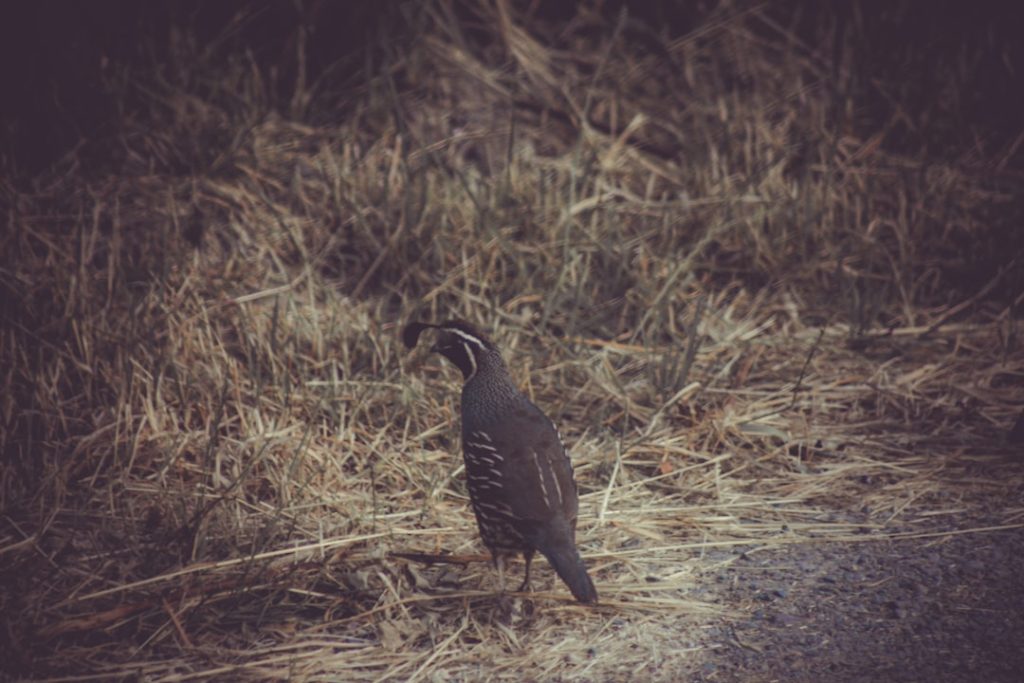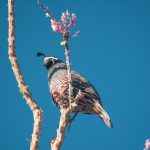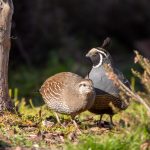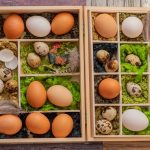Coturnix quail, also known as Japanese quail, are popular birds for breeding due to their fast growth, high egg production, and relatively small size. Breeding season for coturnix quail typically occurs in the spring and summer months when the days are longer and the temperatures are warmer. During this time, quail are more likely to exhibit breeding behaviors and produce fertile eggs. Understanding the breeding season of coturnix quail is essential for successful breeding and raising healthy chicks. In this article, we will explore the natural breeding cycle of coturnix quail, environmental factors that influence breeding season, signs that quail are ready to breed, tips for successful breeding, and how to manage breeding season in captive quail populations.
Table of Contents
- 1 Understanding the Natural Breeding Cycle of Coturnix Quail
- 2 Environmental Factors that Influence Breeding Season
- 3 Signs that Coturnix Quail are Ready to Breed
- 4 Tips for Successful Breeding During the Quail Breeding Season
- 5 Managing Breeding Season in Captive Quail Populations
- 6 Conclusion and Summary of Coturnix Quail Breeding Season
- 7 FAQs
Key Takeaways
- Coturnix quail breeding season is influenced by environmental factors and natural breeding cycles.
- Understanding the natural breeding cycle of coturnix quail is essential for successful breeding.
- Environmental factors such as temperature, light, and diet play a crucial role in influencing the breeding season of coturnix quail.
- Signs that coturnix quail are ready to breed include increased vocalization, mating behavior, and egg production.
- Tips for successful breeding during the quail breeding season include providing the right environment, diet, and monitoring breeding behavior.
Understanding the Natural Breeding Cycle of Coturnix Quail
The natural breeding cycle of coturnix quail is influenced by the length of daylight and temperature. As the days begin to lengthen in the spring, quail are triggered to start breeding. This increase in daylight stimulates the production of hormones that drive breeding behaviors such as courtship displays, mating, and egg laying. In the wild, coturnix quail will seek out suitable nesting sites and begin laying eggs once the conditions are right. Once the eggs are laid, the female will incubate them for about 17-18 days before they hatch. After hatching, the chicks will be cared for by both parents and grow rapidly to reach maturity within a few weeks. Understanding this natural breeding cycle is important for breeders to mimic these conditions in captivity to encourage successful breeding and healthy chick development.
In addition to daylight length, temperature also plays a crucial role in the breeding cycle of coturnix quail. Warmer temperatures are more conducive to breeding as they provide a comfortable environment for courtship and nesting activities. During the breeding season, it is important to provide a consistent and comfortable temperature for the quail to encourage breeding behaviors and successful egg incubation. By understanding the natural breeding cycle of coturnix quail, breeders can manipulate environmental conditions to optimize breeding success in captive populations.
Environmental Factors that Influence Breeding Season
Environmental factors such as light, temperature, and humidity play a significant role in influencing the breeding season of coturnix quail. As mentioned earlier, the lengthening of daylight hours in the spring triggers hormonal changes in quail that stimulate breeding behaviors. To mimic this natural cycle in captivity, breeders can use artificial lighting to extend the photoperiod and encourage quail to enter the breeding season. By providing 14-16 hours of light per day, breeders can simulate longer daylight hours and stimulate the production of reproductive hormones in quail.
Temperature is another critical environmental factor that influences the breeding season of coturnix quail. Quail are more likely to breed in warmer temperatures as it provides a comfortable environment for courtship displays, mating, and nesting activities. To create optimal breeding conditions, breeders should ensure that the temperature in the quail housing is maintained between 60-75°F during the breeding season. This can be achieved by using heating lamps or other heating sources to regulate the temperature and create a comfortable environment for the quail to breed.
Humidity is also an important environmental factor that can influence the breeding season of coturnix quail. High humidity levels can affect egg fertility and hatchability, so it is important to monitor and control humidity levels in the incubation environment. By providing a suitable nesting substrate and maintaining proper humidity levels, breeders can create an ideal environment for successful egg incubation and chick development during the breeding season.
Signs that Coturnix Quail are Ready to Breed
There are several signs that indicate coturnix quail are ready to breed. One of the most obvious signs is an increase in mating behaviors such as males displaying courtship dances and vocalizations to attract females. Males may also become more aggressive towards each other as they compete for mating opportunities with females. Additionally, females may exhibit receptive behaviors such as crouching down and presenting themselves to males for mating.
Another sign that quail are ready to breed is an increase in egg production. Female quail will start laying eggs more frequently as they enter the breeding season. It is important for breeders to provide suitable nesting sites and materials for the quail to lay their eggs and incubate them properly.
Furthermore, changes in behavior such as increased activity, exploration of nesting sites, and scratching at the ground are all indications that quail are preparing to breed. By observing these signs, breeders can determine when their quail are ready to enter the breeding season and take appropriate measures to support successful breeding.
Tips for Successful Breeding During the Quail Breeding Season
To ensure successful breeding during the quail breeding season, there are several tips that breeders can follow. Providing a balanced diet that is high in protein and essential nutrients is crucial for supporting reproductive health in quail. During the breeding season, it is important to offer a diet that includes a mix of commercial quail feed, fresh greens, insects, and supplemental calcium to support egg production and chick development.
Creating a suitable nesting environment is also essential for successful breeding. Providing nesting boxes or areas with suitable substrate such as straw or wood shavings will encourage female quail to lay their eggs in a safe and comfortable environment. It is important to regularly check and collect eggs from the nesting areas to prevent them from being damaged or eaten by other quail.
Maintaining optimal environmental conditions such as temperature, lighting, and humidity is crucial for supporting successful breeding during the quail breeding season. By providing a comfortable and stable environment, breeders can encourage natural breeding behaviors and ensure that eggs are properly incubated for healthy chick development.
Managing Breeding Season in Captive Quail Populations
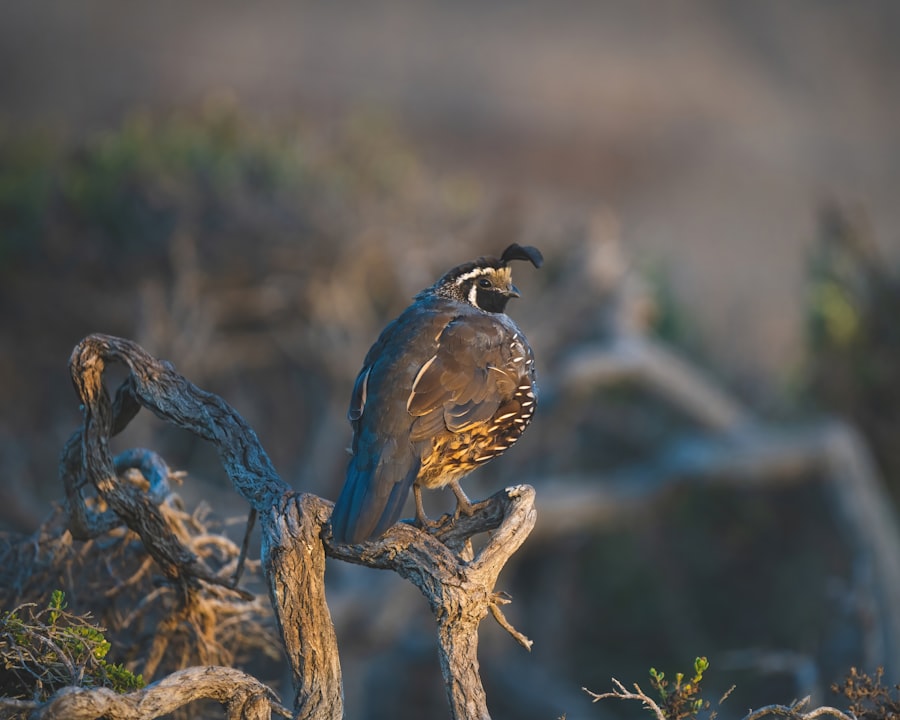
Managing the breeding season in captive quail populations requires careful observation and attention to detail. It is important for breeders to monitor the behavior of their quail closely to determine when they are ready to breed. By observing mating behaviors, increased egg production, and changes in activity levels, breeders can identify when their quail are entering the breeding season.
Once it is determined that the quail are ready to breed, breeders should ensure that they have suitable nesting areas with proper substrate and materials for egg incubation. Regularly collecting eggs from the nesting areas will prevent them from being damaged or eaten by other quail and increase the chances of successful hatching.
Maintaining a clean and hygienic environment is also crucial for managing the breeding season in captive quail populations. Regularly cleaning nesting areas, providing fresh bedding materials, and ensuring that food and water sources are clean and accessible will support healthy breeding behaviors and chick development.
Additionally, it is important for breeders to keep detailed records of their quail breeding activities including mating behaviors, egg production, hatch rates, and chick development. This information will help breeders track their breeding success and make informed decisions for future breeding seasons.
Conclusion and Summary of Coturnix Quail Breeding Season
In conclusion, understanding the natural breeding cycle of coturnix quail and managing environmental factors such as light, temperature, and humidity are essential for successful breeding during the quail breeding season. By observing signs that indicate when quail are ready to breed and following tips for successful breeding, breeders can support healthy reproduction and chick development in captive populations. Managing the breeding season in captive quail populations requires careful observation, providing suitable nesting environments, maintaining optimal environmental conditions, and keeping detailed records of breeding activities. By following these guidelines, breeders can optimize their quail breeding efforts and raise healthy chicks for production or hobby purposes.
If you’re wondering when the breeding season for coturnix quail is, you’ll find some valuable insights in an article on Poultry Wizard’s website. The article discusses the breeding habits of quails and provides helpful tips for successful breeding. For more information on quail breeding and other poultry-related topics, visit Poultry Wizard. Additionally, if you’re interested in learning about the incubation process and whether quails sit on their eggs, check out their article on quails sitting on their eggs. And if you’re also into raising chickens, you might want to explore their insights on creating the perfect nest box in your chicken coop at Poultry Wizard’s guide to chicken coop nest boxes.
FAQs
What is the breeding season for coturnix quail?
The breeding season for coturnix quail typically occurs in the spring and summer months, when the days are longer and the temperatures are warmer.
At what age do coturnix quail reach sexual maturity?
Coturnix quail reach sexual maturity at around 6-8 weeks of age, at which point they are able to breed.
How long does the breeding season last for coturnix quail?
The breeding season for coturnix quail can last for several months, typically from late spring to early fall.
What are the signs that coturnix quail are ready to breed?
Signs that coturnix quail are ready to breed include increased vocalization, courtship behavior, and the presence of mating pairs.
Can coturnix quail breed year-round?
While coturnix quail are capable of breeding year-round in captivity, their natural breeding season is typically limited to the spring and summer months.
Meet Walter, the feathered-friend fanatic of Florida! Nestled in the sunshine state, Walter struts through life with his feathered companions, clucking his way to happiness. With a coop that’s fancier than a five-star hotel, he’s the Don Juan of the chicken world. When he’s not teaching his hens to do the cha-cha, you’ll find him in a heated debate with his prized rooster, Sir Clucks-a-Lot. Walter’s poultry passion is no yolk; he’s the sunny-side-up guy you never knew you needed in your flock of friends!

